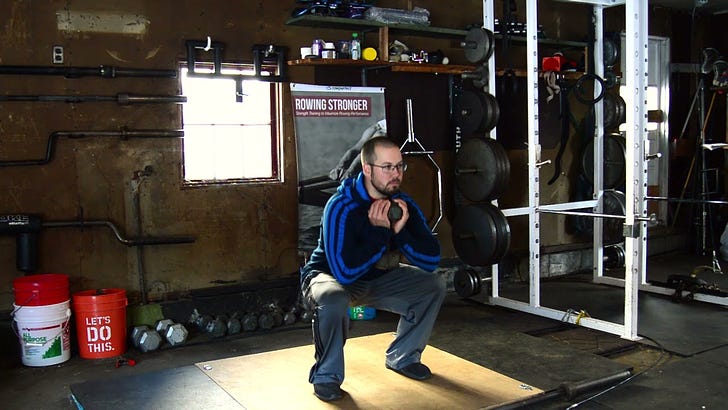The number one strength training performance element that I’ve coached across populations of rowers is tempo control. Specifically, lowering the weight under control and using a 2-to-1 lowering-to-lifting tempo as the default setting for all exercises unless noted otherwise.
Tempo control costs nothing and requires no additional equipment. Any rower of any level can do it starting today in their strength training. Despite this accessibility, it's something I had to learn for myself in my own training, and many rowers have told me that I'm the first coach to coach them on it.
Tempo control can be challenging on both the lowering and lifting phases of the movement, as well as the point of reversal between lowering and lifting.
Rowers often struggle with lowering the weight under control and tend to "drop" to the bottom position of many exercises. I think this is probably because it is genuinely hard, and also because rowing lacks an equivalent eccentric phase of controlling or absorbing force while lowering. It's undertrained from the sport, and then undertrained again by lack of awareness in the gym.
Rowers also may struggle to accelerate the load on the lifting phase. This is related to the speed of the lowering phase: more down force from a "drop" lowering phase means more challenge at the point of reversal and less strength left for the lifting phase. I think a secondary reason is that rowers tend to not be “explosive” athletes the way we see with other sports more dependent on sprint and power who naturally accelerate better.
The good news is that these are all trainable qualities in the weightroom! Paying attention to tempo control offers numerous benefits, including:
Better exercise technique, thanks to increased attention and control
More muscular stimulus, thanks to the physiology of eccentric muscle actions on the lowering phase (longer physiological answer I can give you if you’re interested)
Less joint stress, thanks to keeping tension on the muscles more than relying on the joints and skeletal structures to provide a rebounding effect or absorb all the “crashing” from uncontrolled lowering phase
More effectiveness from power training, when rowers are working to accelerate the lifting phase even more
Better long-term progress, thanks to all of that
I did a video on this in 2021 and talked about it in my presentation at the 2021 USRowing Convention, also linked below in case you missed it then. It’s just under four minutes long and summarizes the need for tempo training and demonstrates several different tempo variations beyond 2-to-1 that we can use on different exercises for different goals and purposes.
The big takeaway is getting 2-to-1 tempo to be the default setting unless noted otherwise (eg. kettlebell swing, Olympic lifts, Nordic hamstring curls, etc.). I'm trying to be better about demonstrating this in my own exercise videos, too, especially as I've re-done some of my older ones.
More about this next week for those thinking power training approaching spring and early summer racing!




